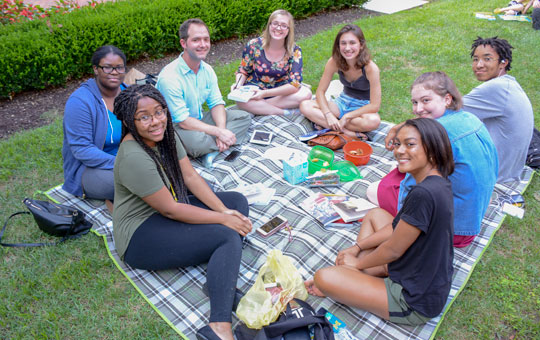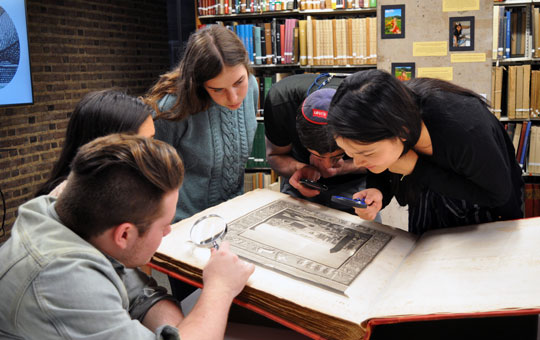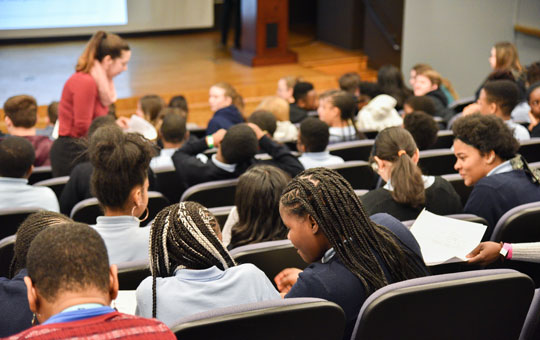Learning Programs
The Penn Museum is a place where visitors of all ages and backgrounds are invited to learn more. In 2018–2019, our Learning Programs invited schoolchildren and adult visitors alike to engage with the Museum’s collections and resources in order to find out more about the ancient world and contemporary world cultures.
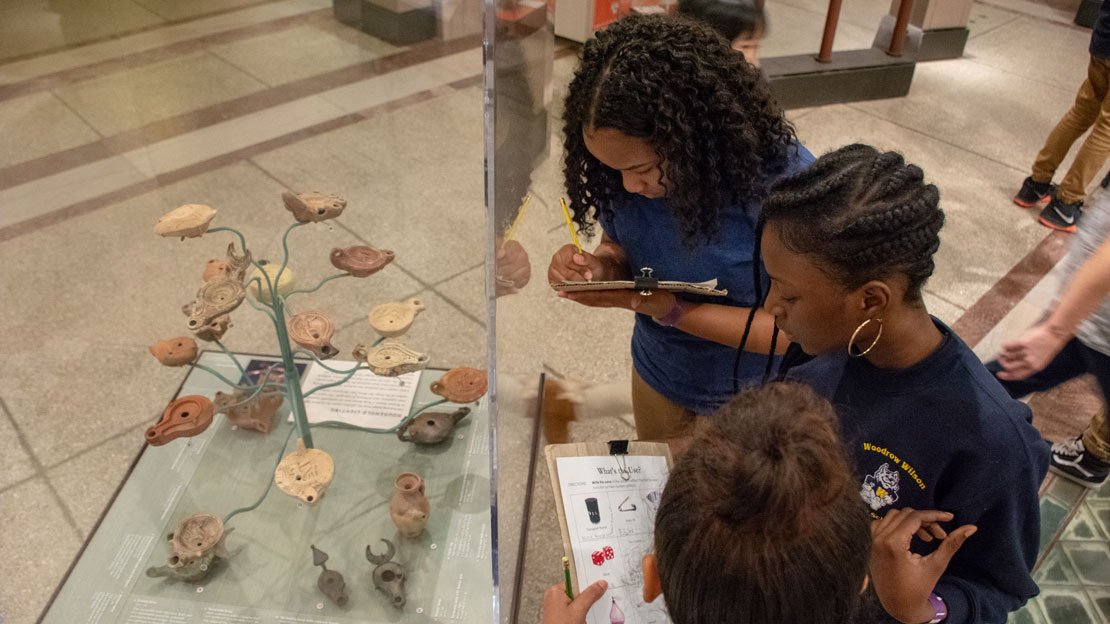
Engaging Our Community
The Museum’s partnership with the School District of Philadelphia served more than 6,000 students in 2018–2019, despite challenges related to the renovations. Middle school students continued to learn about ancient Egypt, Rome, and Mesopotamia. Thanks to a generous grant from the Freeman Foundation, Unpacking the Past educators also planned and piloted a China track to highlight Chinese objects through fun educational workshops.
The Museum engaged with more than 17,000 people through outreach programs in 2018–2019. These events included the Philadelphia Science Festival provides opportunities for Philadelphians of all ages to engage with and build a community around science. Through five events hosted between April 26 and May 4 in Philadelphia, over 900 community members celebrated the Penn Museum’s scientific work through hands-on activities, access to experts, and collaborations with Penn departments and cultural organizations. As part of the Science Festival, the Museum’s Teen Ambassadors hosted a Discovery Day program in Clark Park, a few blacks from the Penn campus. The teens studied the science of conservation to facilitate the Can You Match That X-Ray? Game, interacting with visitors of all ages and teaching them to use their observation skills.

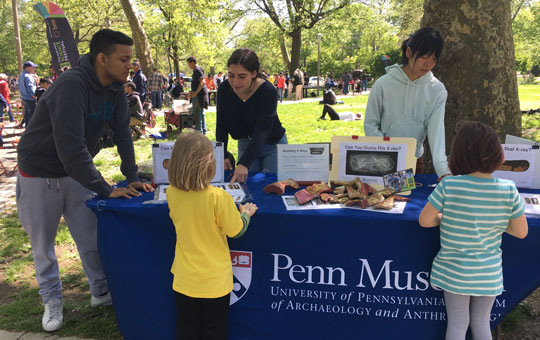
Digging Deeper
In fall 2018, the Museum debuted the Daily Dig program: each day at 1:00 pm, visitors are invited to join a free 15-minute talk highlighting a single object. The objects range throughout the galleries, from swords to spindles, cylinder seals to lacrosse sticks. In 2018–2019, the Daily Digs together with other free public tours reached more than 5,000 visitors, nearly tripling the previous year’s participation.
Global Guides tours, launched in May 2018, continued to draw more and more visitors for tours of the Middle East Galleries with Yaroub Al-Obaidi, Abdulhadi Al-Karfawi, and Moumena Saradar. Visitors who have been asked to evaluate their tours: nearly half shared that they had no previous or very little contact with anyone of Middle Eastern origin during their lives, yet by the end of the tour, 82% were interested in learning more about the Middle East, particularly about its history, art, and culture. Generously supported by The Barra Foundation’s Catalyst Fund. Expanded to Africa Galleries and Mexico and Central America Galleries when they opened in fall 2019.
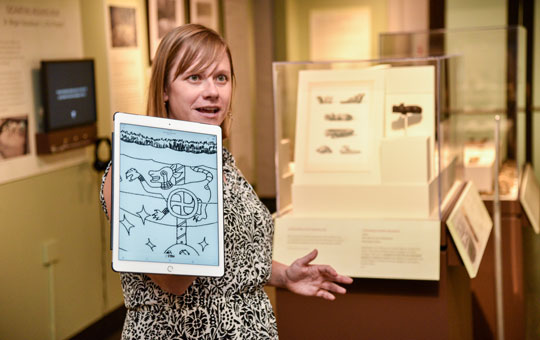
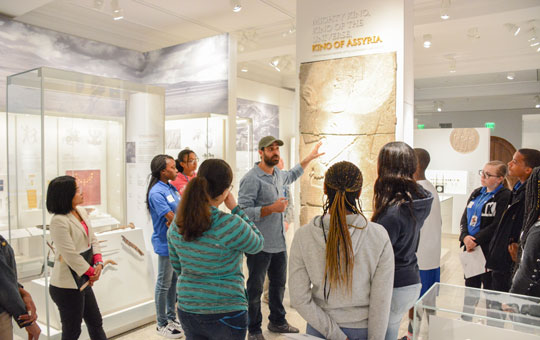
Gaining Museum Experiences
The Teen Ambassadors program focuses on improving skills critical for college success, including public speaking, formulating research questions, and academic writing. Over 28 weeks, nine high school students learned about anthropology and archaeology and explored their curiosities in STEAM-related fields with weekly activities. Ambassadors also host educational events for other teens based on their own interests—in 2018–2019, the Ambassadors hosted events on globalization, climate change, and DNA.
The Teen Summer Internship Program trains high school students for professional work by pairing them with departments across the Museum—including Development, Learning Programs, the Museum Library, and Conservation—for two three-week internships. Students work directly with Museum supervisors and receive behind-the-scenes tours, workshops, and talks from staff and faculty, introducing them to multi-disciplinary work approaches, developing career skillsets, and gaining practical and professional experience.
The Museum partnered with the World Affairs Council of Philadelphia to bring more than 1,000 students from the Philadelphia region to the Museum for a Junior United Nations Program, for middle school students, and a World Cultures Day, for high school students to enjoy the diversity of cultural expressions across space and time. All programs included a special keynote speaker, gallery tours, and International Classroom programs that connected to the galleries.
